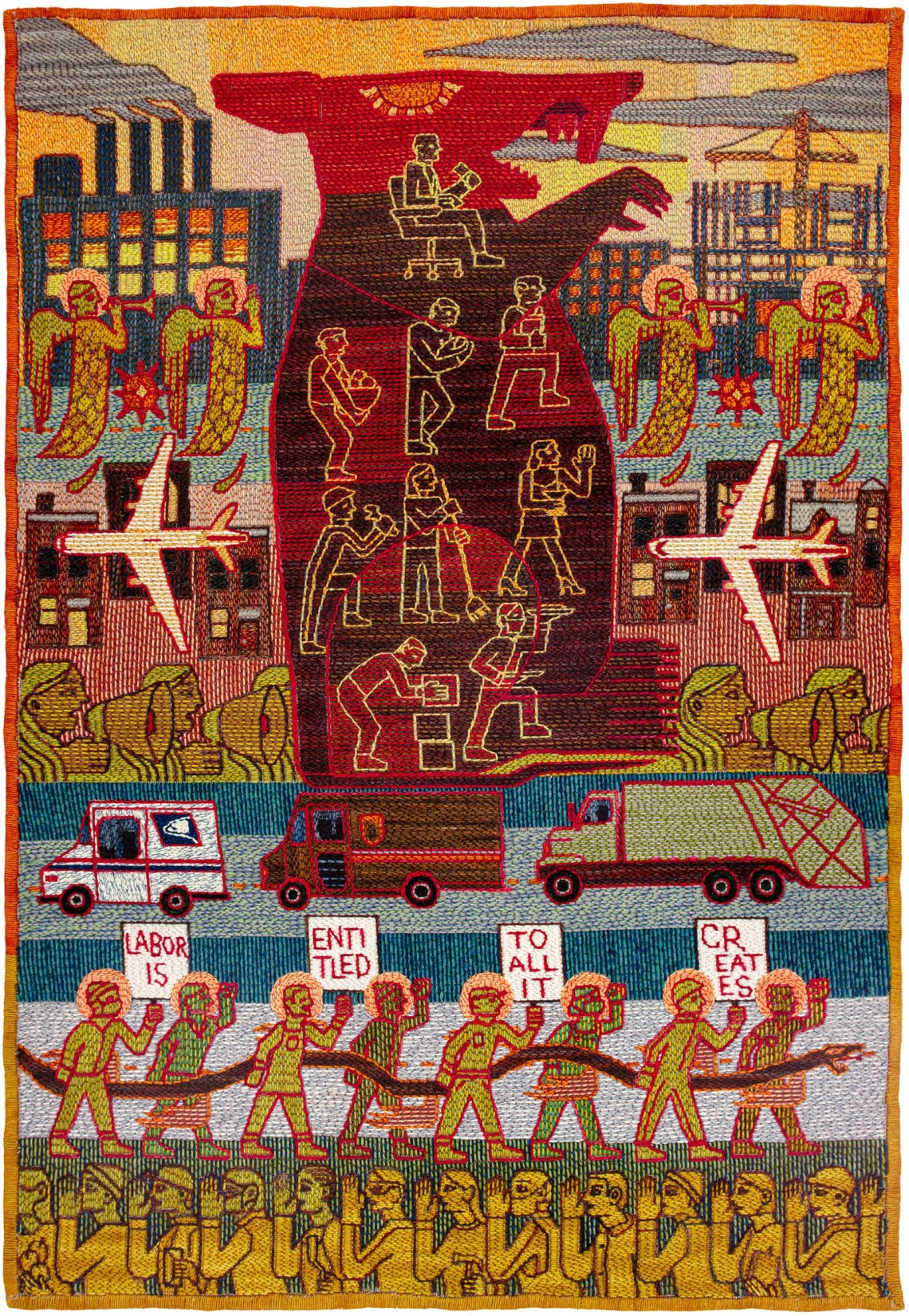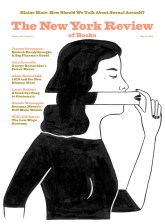At the Starbucks Reserve Roastery in the Chelsea neighborhood of Manhattan, the giant wooden front doors swing open to reveal the company’s sprawling, multilevel temple to itself. The space, which contains a cocktail bar, a gift shop, and a bakery in addition to a café, is done up in walnut and leather, with tastefully displayed industrial machinery. The presiding deity is an enormous copper statue of the Starbucks mermaid bursting from a wall, unless we’re meant to worship the smaller, shinier, bug-eyed mermaid statue for sale in the shop for $4,500.
Last autumn, on the third day of a strike over unsanitary conditions in the Chelsea café, workers on the picket line seemed to take particular glee in puncturing the Roastery’s carefully controlled image of luxury. “Do you want some bugs with your dessert? I’d be glad to help you out,” one baker said to passersby cheerfully. “Only fifteen dollars for mold with bedbugs.”
In April 2022 the Roastery became the first Starbucks in New York City to unionize. Seven months later Starbucks was refusing to begin serious contract negotiations with the location’s employees. I wondered, standing on the sidewalk, if the strike was mostly tactical, an attempt to shame the company into coming to the table. But Owen, a nineteen-year-old who has worked at the café for a year and was a member of the original unionization committee, told me that it was about workers coming together to address serious workplace concerns. There were ongoing complaints of mold in an ice machine, he said, and bedbugs had been spotted twice. Management insisted there wasn’t an infestation.
Management’s handling of the bedbug complaint reminded Owen of its tepid response to a Covid surge among workers in December 2021. “They waited until it was too late, until all of us had Covid. That’s kind of what they’re doing now,” he told me. Starbucks cultivates a progressive image and offers its employees (or “partners,” as it insists on calling them) more benefits than other fast-food chains, but during the pandemic many workers were radicalized by the dissonance between the company’s stated values and the disrespect they felt as they worked frantically in skeleton crews to keep the cafés running with no extra pay. Since December 2021 nearly three hundred Starbucks cafés around the country have voted to unionize. The company has tried to crush the union by a variety of means, including closing unionized locations and firing organizers.
The National Labor Relations Board (NLRB) has issued over eighty complaints against Starbucks. From mid-2021 to mid-2022 it faced more NLRB cases than any other private employer, by a 30 percent margin. (One New York judge described their actions as “egregious and widespread misconduct.”) This past March Senator Bernie Sanders hauled Starbucks founder and on-again-off-again CEO Howard Schultz before the Health, Education, Labor and Pensions Committee under threat of subpoena to testify about the company’s labor violations. In the hearing, Schultz denied that Starbucks had broken the law in any way; refused to promise that he would expedite contract negotiations with workers at the first unionized café, who had been waiting over 460 days for a contract; and objected to the term “billionaire.” “Yes, I have billions of dollars,” he said. “I earned it. No one gave it to me. And I’ve shared it constantly with the people of Starbucks. And so anyone who keeps labeling this billionaire thing…. It’s your moniker constantly. It’s unfair.”
-
1
For more on worker surveillance, see Zephyr Teachout, “The Boss Will See You Now,” The New York Review, August 18, 2022. ↩
-
2
For more on the assault on unions, see Jane McAlevey, A Collective Bargain: Unions, Organizing, and the Fight for Democracy (Ecco, 2020). ↩
-
3
A December ruling by the NLRB found that employers are liable for “direct and foreseeable” financial harms suffered by an employee as the result of an illegal firing, such as out-of-pocket medical expenses. ↩
-
4
For more on the inception of Fight for $15, see Steven Greenhouse, Beaten Down, Worked Up: The Past, Present, and Future of American Labor (Knopf, 2019). ↩






